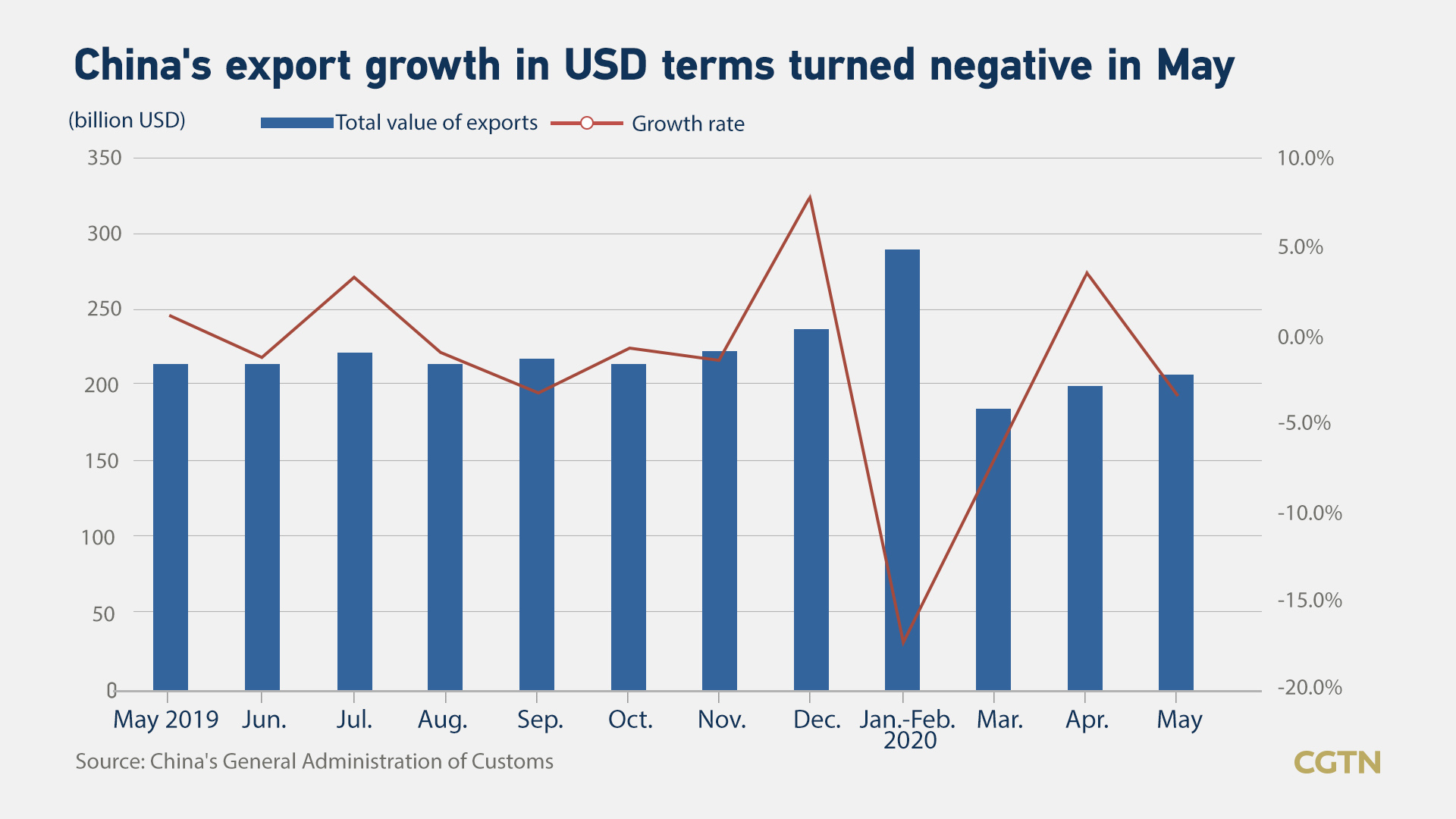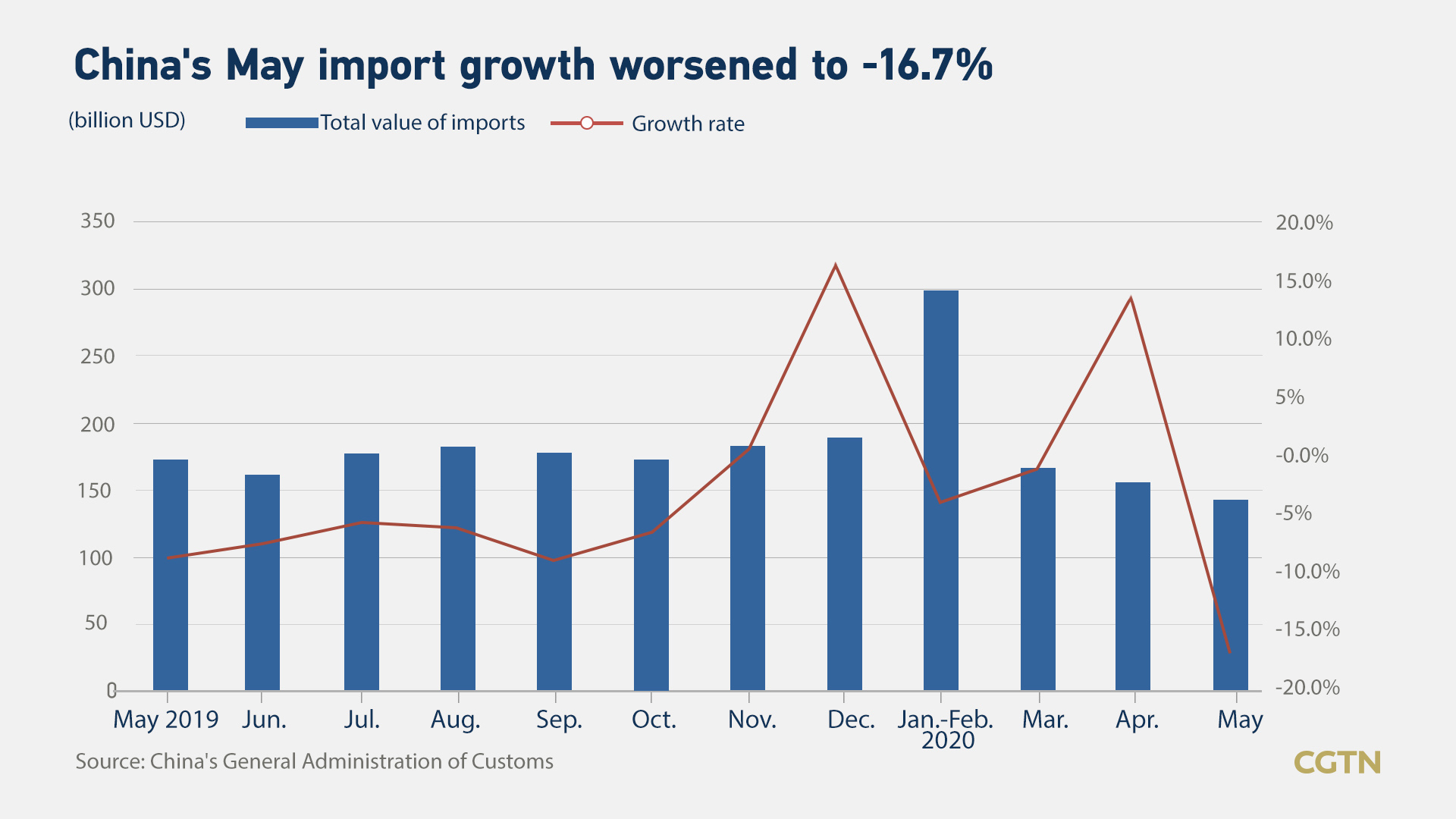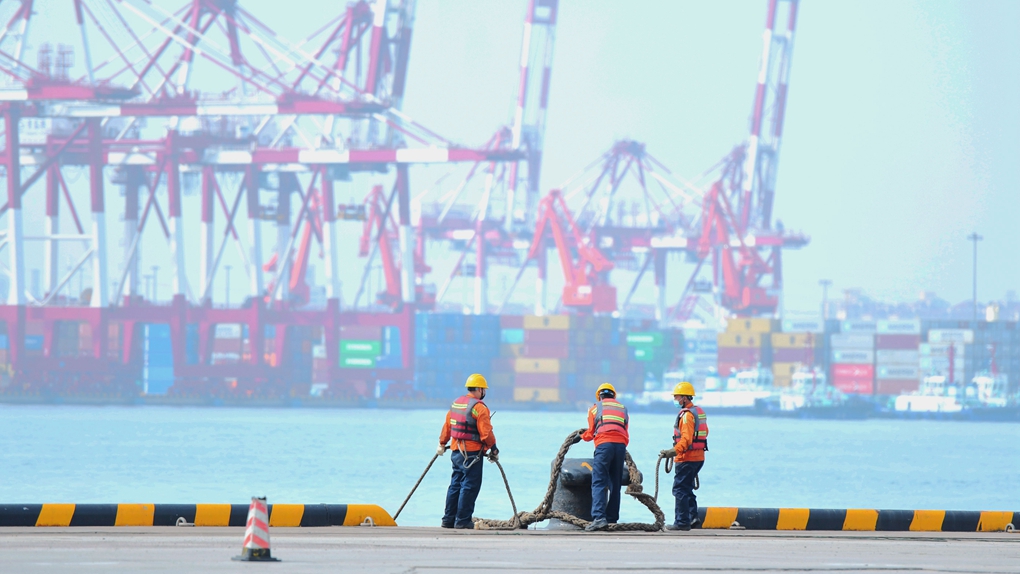China's exports in May, in U.S. dollar terms, declined 3.3 percent year on year, but still beat market expectations. Analysts attributed the better-than-expected performance to a production catch-up following the COVID-19 pandemic and a continuation of strong exports of medical products.
The export data beat expectations by Consensus, Nomura and Bloomberg that respectively predicted that exports would contract by 6.5 percent, 8.0 percent and 6.5 percent. Although the growth in May turned to negative from April's robust reading of 3.5 percent, resilience remained, according to Nomura Holdings.
"Such resilience was likely boosted by sharp acceleration of anti-COVID-19 related exports, which may have accounted for 8-9 percent of total exports in May, notably higher than 4 percent in April and merely negligible in Q1 and 2019," UBS said.
Echoing UBS, Nomura said a production catch-up following the COVID-19 outbreak in Q1 also contributed to the export resilience.

However, the financial service firm cautioned, "We do not think the strong growth in exports of medical supplies is sustainable as overseas economies gradually reopen. For example, the export authorization scheme for personal protective equipment (PPE) in the EU, first introduced in March this year to ensure local demand, ceased to apply from 26 May.
"With real GDP in the major economies of Europe and the Americas set to drop by around 15 percent year on year in Q2, the almost-cleared production backlog and slowing export growth of medical products, a double-digit contraction in exports in coming months looks unavoidable, and a declining demand for China's PPE products, we expect export growth to drop much further in the next couple of months."
Hi-tech exports also stayed robust at 8 percent, especially electronics goods such as computers which increased 48 percent likely due to rising need of "working from home."

Imports weakened but not some agricultural products
Imports in May declined by 16.7 percent year on year, weaker than expected (Bloomberg predicted a 7.9 percent decline), as the import value of crude fell sharply.
The weakness was across major partners, with those from G3 - the U.S., Japan and Eurozone - sliding by 15.5 percent and ASEAN down 5.7 percent.
"Sharp decline of commodity prices was to blame, dragging down import value of crude oil to by 55 percent, while its import volume jumped notably by 27 percentage point to 19 percent. Import volume of iron ore and copper ore both dipped in May, possibly indicating soft related domestic demand," said UBS.
In contrast, import growth of agricultural goods picked up by 6 percentage points to 12 percent, in particular soybean and grain, both up by 40 percentage points to 25 percent and 29 percent, respectively.
This was "partly helped by China's increasing purchase of U.S. agricultural goods," UBS said.

Terminal workers tie the rope of a freighter that had just been moored at the Qingdao port, China's eastern Shandong province, on June 2, 2020. /VCG
Terminal workers tie the rope of a freighter that had just been moored at the Qingdao port, China's eastern Shandong province, on June 2, 2020. /VCG
In yuan terms, China's exports rose by 1.4 percent year on year to 1.46 trillion yuan in May, official data showed on Sunday.
Imports fell by 12.7 percent to 1.01 trillion yuan last month, resulting in a trade surplus of 442.75 billion yuan, the General Administration of Customs (GAC) said.
Foreign trade of goods decreased by 4.9 percent year on year in May to 2.47 trillion yuan.
In the first five months, the foreign trade of goods dropped by 4.9 percent on year to 11.54 trillion yuan, maintaining the same level of decrease during the January-April period.
During the January-May period, ASEAN remained as China's largest trading partner with trade up by 4.2 percent year on year to 1.7 trillion yuan, accounting for 14.7 percent of China's total foreign trade.
Trade with the European Union, the United States and Japan decreased during the period, GAC data showed.
During the same period, foreign trade volume of private enterprises expanded by 1.8 percent to 5.11 trillion yuan, accounting for 44.3 percent of China's total foreign trade volumes, up by 2.9 percentage points from the same period last year.
General trade, which represents a longer production chain and higher added-value as the key indicator of a country's foreign trade competence, decreased by 4.7 percent year on year in the first five months. However, it accounted for 59.9 percent of the country's total trade, 0.1 percentage points higher over one year ago.
(With input from Xinhua)